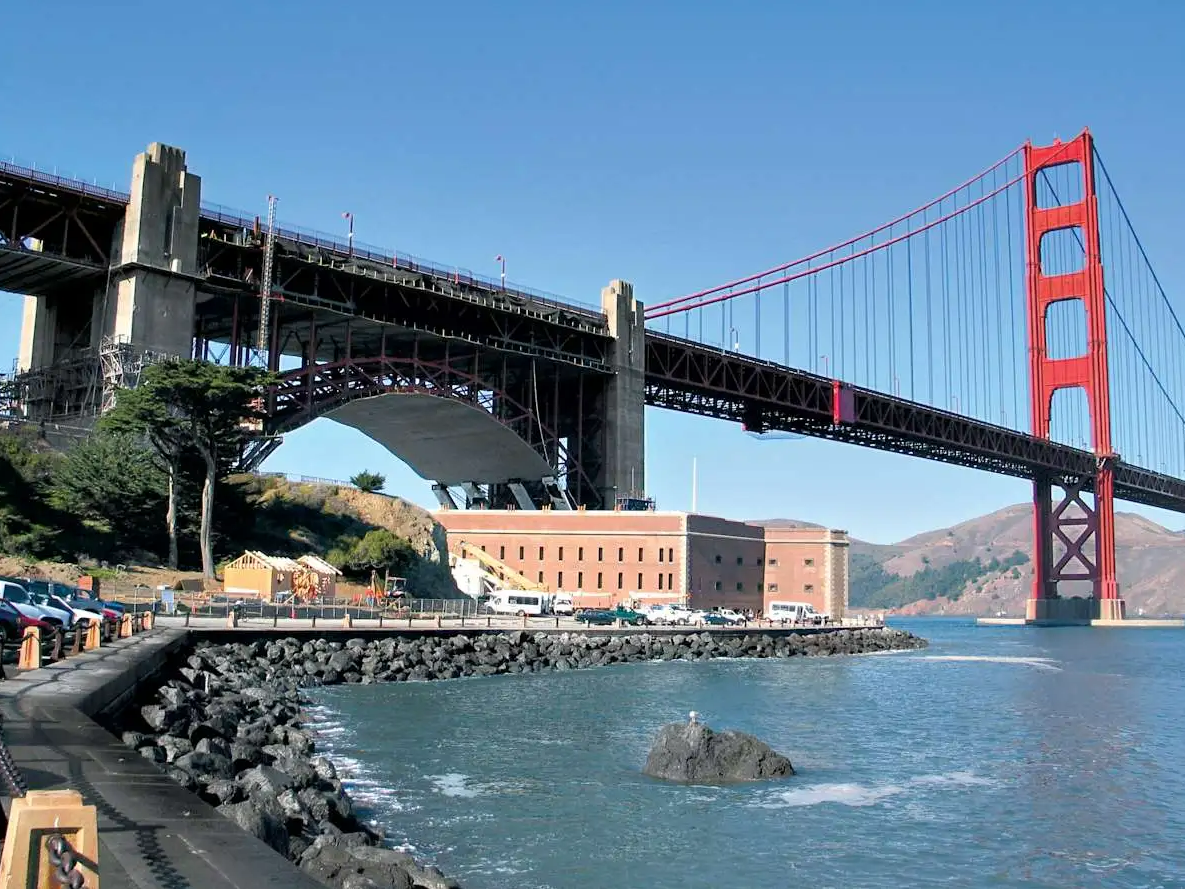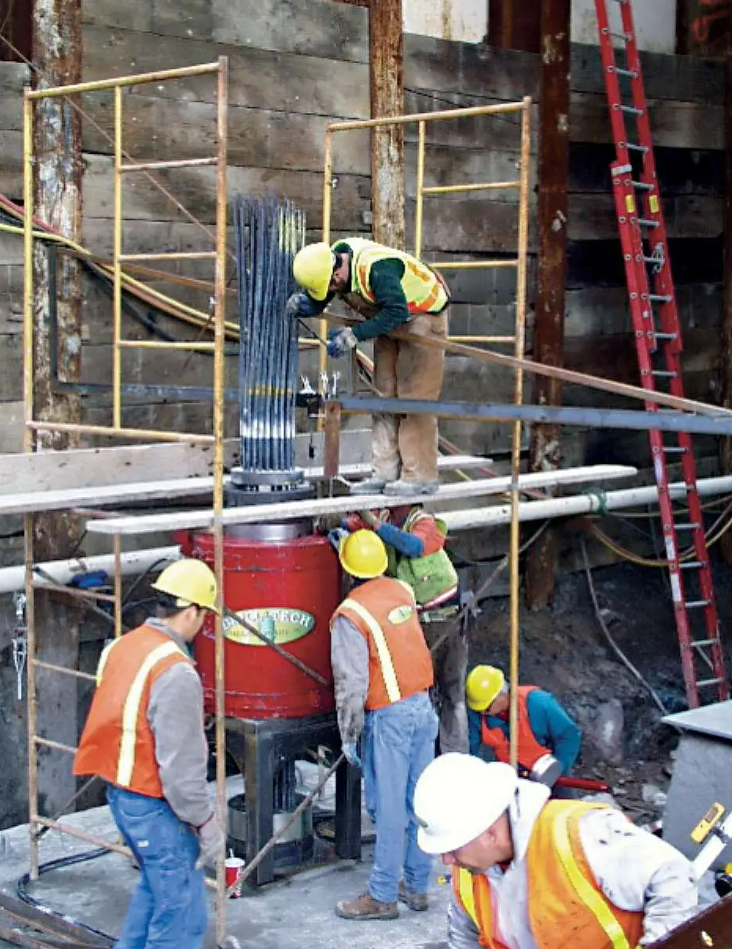Seismic Retrofit of the Golden Gate Bridge Using Geotechnical and Post-Tensioning Systems
The Golden Gate Bridge in San Francisco is located in a highly active seismic zone. Studies indicated that a magnitude 7+ earthquake near the bridge could cause severe damage, making a comprehensive seismic retrofit essential.
Project Scope
The retrofit was planned in three phases, ensuring seismic resilience while preserving the bridge’s historic architectural beauty:
The Golden Gate Bridge in San Francisco is located in a highly active seismic zone. Studies indicated that a magnitude 7+ earthquake near the bridge could cause severe damage, making a comprehensive seismic retrofit essential.
Project Scope
The retrofit was planned in three phases, ensuring seismic resilience while preserving the bridge’s historic architectural beauty:
- North Approach Viaduct – Strengthened to prevent the collapse of its tall support towers.
- South Approach Viaduct & Fort Point Arch – Included anchorage housing, pylons (S1 & S2), and energy-absorbing devices to control movements.
- Suspension Bridge & North Anchorage Housing – Strengthened main span trusses, tower connections, and foundations to withstand seismic forces.
- Supplied and installed multistrand post-tensioning tendons and epoxy-coated multistrand tiedown anchors.
- Reinforced pylons S1 & S2 with steel plates and concrete coverings for seismic resistance.
- Strengthened foundations using 90 multistrand tendons (pylon S1) and 24 tiedown anchors (pylon S2).
- Upgraded South Anchorage Housing with high-strength THREADBAR® tendons.
- Installed shear walls and additional reinforcements in the south abutment and multiple foundation sections.
- Construction began in 2001, with DYWIDAG’s key installations completed in August 2004.
- The Fort Point Arch uplift risk was mitigated using controlled lifting mechanisms.
- The Golden Gate Bridge remains safe and operational, now capable of withstanding earthquakes of up to magnitude 8.3.



